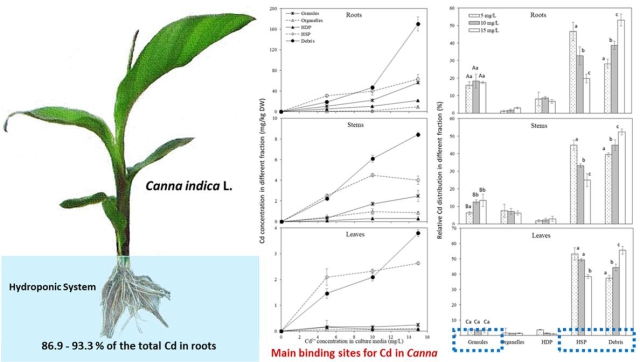

Canna indica L. is a promising species for heavy metal phytoremediation due to its fast growth rate and large biomass. However, few studies have investigated cadmium (Cd) tolerance mechanisms. In the present study, Canna plants were cultivated under hydroponic conditions with increasing Cd concentrations (0, 5, 10, 15 mg/L). We found that the plants performed well under 5 mg/L Cd2+ stress, but damage was observed under higher Cd exposure, such as leaf chlorosis, growth inhibition, a decreased chlorophyll content, and destruction of the ultrastructure of leaf cells. Additionally, Canna alleviated Cd toxicity to a certain extent. After Canna was exposed to 5, 10 and 15 mg/L Cd2+ for 45 d, the highest Cd concentration was exhibited in roots, which was almost 17–47 times the Cd concentration in leaves and 8–20 times that in stems. At the subcellular level, cellular debris and heat-stable proteins (HSPs) were the main binding sites for Cd, and the proportion of Cd in the two subcellular fractions accounted for 71.4–94.2% of the total Cd. Furthermore, we found that granules could participate in the detoxification process when Cd stress was enhanced. Our results indicated that Canna indica L. can tolerate Cd toxicity by sequestering heavy metals in root tissues, fencing out by cell wall, and binding with biologically detoxified fractions (granules and HSPs).

The growth pictures of Canna indica L under 0, 5, 10, 15 mg/L Cd treatment.